We practice a minimally invasive approach to your foot or ankle problem with surgery as the last option
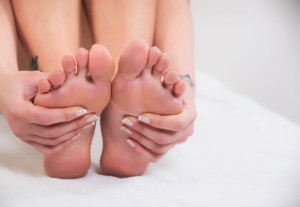 Many people find it beneficial to practice daily foot stretches. Injuries may be prevented when the feet are flexible, and everyday activities may be easier to accomplish. An effective stretch is referred to as the towel stretch. This is done by sitting down and wrapping a towel around your feet and pulling gently toward you. If you are afflicted with plantar fasciitis, it may be helpful to stand on a step, and place your heels off the edge. The stretch can be felt while the heels move up and down. The sole of the foot can be stretched by standing on a golf or tennis ball and rolling it between the toes and the heels. This may help tired feet to feel better at the end of the day. If you would like additional information about the benefits of stretching the feet, please speak to a podiatrist.
Many people find it beneficial to practice daily foot stretches. Injuries may be prevented when the feet are flexible, and everyday activities may be easier to accomplish. An effective stretch is referred to as the towel stretch. This is done by sitting down and wrapping a towel around your feet and pulling gently toward you. If you are afflicted with plantar fasciitis, it may be helpful to stand on a step, and place your heels off the edge. The stretch can be felt while the heels move up and down. The sole of the foot can be stretched by standing on a golf or tennis ball and rolling it between the toes and the heels. This may help tired feet to feel better at the end of the day. If you would like additional information about the benefits of stretching the feet, please speak to a podiatrist.
Stretching the feet is a great way to prevent injuries. If you have any concerns with your feet consult with Dr. David Ungar from Personal Foot Care. Our doctor will assess your condition and provide you with quality foot and ankle treatment.
Stretching the Feet
Being the backbone of the body, the feet carry your entire weight and can easily become overexerted, causing cramps and pain. As with any body part, stretching your feet can serve many benefits. From increasing flexibility to even providing some pain relief, be sure to give your feet a stretch from time to time. This is especially important for athletes or anyone performing aerobic exercises, but anyone experiencing foot pain or is on their feet constantly should also engage in this practice.
Great ways to stretch your feet:
Individuals who tend to their feet by regular stretching every day should be able to minimize foot pain and prevent new problems from arising.
If you have any questions, please feel free to contact our office located in Farmington, MI . We offer the newest diagnostic and treatment technologies for all your foot care needs.
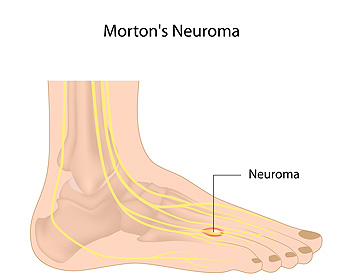 The pain and discomfort that is typically associated with Morton’s neuroma is located on the ball of the foot. Many patients may notice swelling and feel a burning sensation in that area of the foot, and it may affect the way you walk. It generally occurs as a result of a thickened nerve that leads to the toes. This may happen from wearing shoes that are too tight and may cause the affected nerve to become irritated. There may be other causes of Morton’s neuroma, and these may include having flat feet, or medical conditions such as hammer toes or bunions. It is important to have a proper diagnosis performed. This can be accomplished by having an X-ray taken, which may be helpful in eliminating other conditions that may exist. If you feel you have this condition, it is advised to consult with a podiatrist who can suggest wearing insoles or recommend foot strengthening exercises.
The pain and discomfort that is typically associated with Morton’s neuroma is located on the ball of the foot. Many patients may notice swelling and feel a burning sensation in that area of the foot, and it may affect the way you walk. It generally occurs as a result of a thickened nerve that leads to the toes. This may happen from wearing shoes that are too tight and may cause the affected nerve to become irritated. There may be other causes of Morton’s neuroma, and these may include having flat feet, or medical conditions such as hammer toes or bunions. It is important to have a proper diagnosis performed. This can be accomplished by having an X-ray taken, which may be helpful in eliminating other conditions that may exist. If you feel you have this condition, it is advised to consult with a podiatrist who can suggest wearing insoles or recommend foot strengthening exercises.
Morton’s neuroma is a very uncomfortable condition to live with. If you think you have Morton’s neuroma, contact Dr. David Ungar of Personal Foot Care. Our doctor will attend to all of your foot care needs and answer any of your related questions.
Morton’s Neuroma
Morton's neuroma is a painful foot condition that commonly affects the areas between the second and third or third and fourth toe, although other areas of the foot are also susceptible. Morton’s neuroma is caused by an inflamed nerve in the foot that is being squeezed and aggravated by surrounding bones.
What Increases the Chances of Having Morton’s Neuroma?
Morton’s neuroma is a very treatable condition. Orthotics and shoe inserts can often be used to alleviate the pain on the forefront of the feet. In more severe cases, corticosteroids can also be prescribed. In order to figure out the best treatment for your neuroma, it’s recommended to seek the care of a podiatrist who can diagnose your condition and provide different treatment options.
If you have any questions, please feel free to contact our office located in Farmington, MI . We offer the newest diagnostic and treatment technologies for all your foot care needs.
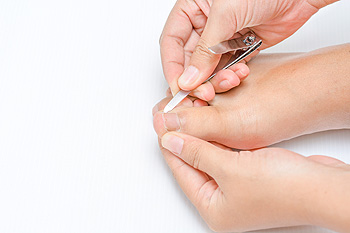 Ingrown toenails are uncomfortable and can sometimes make it painful to walk. Common causes for this condition include ill-fitting shoes, injury, excessively sweaty feet, and thick or curved nails. Once they have started to form, ingrown toenails can go through three stages. Stage 1 begins with the initial inflammation and is followed by moderate pain, swelling, redness, and visible fluid accumulation. Stage 2 occurs if the symptoms begin to worsen. Signs that the nail is entering stage 2 are increased pain and pus discharge from the wound. Stage 3 is the most severe form of an ingrown toenail and requires medical attention in order to be treated. In stage 3, new tissue can form over the wound, which can easily intensify the infection. It’s important to begin treating an ingrown toenail as soon as you notice any symptoms, so you can avoid progression into stage 3. If you have an ingrown toenail, it is recommended you consult with a podiatrist to learn about treatment options.
Ingrown toenails are uncomfortable and can sometimes make it painful to walk. Common causes for this condition include ill-fitting shoes, injury, excessively sweaty feet, and thick or curved nails. Once they have started to form, ingrown toenails can go through three stages. Stage 1 begins with the initial inflammation and is followed by moderate pain, swelling, redness, and visible fluid accumulation. Stage 2 occurs if the symptoms begin to worsen. Signs that the nail is entering stage 2 are increased pain and pus discharge from the wound. Stage 3 is the most severe form of an ingrown toenail and requires medical attention in order to be treated. In stage 3, new tissue can form over the wound, which can easily intensify the infection. It’s important to begin treating an ingrown toenail as soon as you notice any symptoms, so you can avoid progression into stage 3. If you have an ingrown toenail, it is recommended you consult with a podiatrist to learn about treatment options.
Ingrown toenails may initially present themselves as a minor discomfort, but they may progress into an infection in the skin without proper treatment. For more information about ingrown toenails, contact Dr. David Ungar of Personal Foot Care. Our doctor can provide the care you need to keep you pain-free and on your feet.
Ingrown Toenails
Ingrown toenails are caused when the corner or side of a toenail grows into the soft flesh surrounding it. They often result in redness, swelling, pain, and in some cases, infection. This condition typically affects the big toe and may recur if it is not treated properly.
Causes
You are more likely to develop an ingrown toenail if you are obese, have diabetes, arthritis, or have any fungal infection in your nails. Additionally, people who have foot or toe deformities are at a higher risk of developing an ingrown toenail.
Symptoms
Some symptoms of ingrown toenails are redness, swelling, and pain. In rare cases, there may be a yellowish drainage coming from the nail.
Treatment
Ignoring an ingrown toenail can have serious complications. Infections of the nail border can progress to a deeper soft-tissue infection, which can then turn into a bone infection. You should always speak with your podiatrist if you suspect you have an ingrown toenail, especially if you have diabetes or poor circulation.
If you have any questions, please feel free to contact our office located in Farmington, MI . We offer the newest diagnostic and treatment technologies for all your foot care needs.
An ingrown toenail is a nail that has curved downward and grows into the skin. This typically occurs at the nail borders, or the sides of the nail. As a result, pain, redness, swelling, and warmth may occur in the toe. If a break in the skin forms due to the ingrown nail, bacteria may enter and cause an infection in the area; this is typically characterized by a foul odor and drainage.
Ingrown toenails have multiple reasons for developing. In many instances, the condition is a result of genetics and is inherited. The most common cause, however, is improper trimming; cutting the toenails too short forces the skin beside the nail to fold over. An ingrown toenail can also develop due to trauma, such as stubbing the toe, having an object fall on the toe, or participating in activities that involve repeated kicking or running. Wearing shoes that are too tight or too short can also cause ingrown toenails.
Treatment for an ingrown toenail varies between patients and the severity of the condition. Milder cases that don’t involve infection or other medical conditions can benefit from soaking the feet in room-temperature water and gently massaging the side of the nail. In most cases, however, it is best to see your podiatrist for thorough and proper treatment. After examining your toe, your podiatrist may prescribe oral antibiotics to clear the infection if one is present. Surgical removal of either a portion of the nail or the entire nail may also be considered. In some cases, complete removal or destruction of the nail root may be required. Most patients who undergo nail surgery experience minimal pain afterward and can return to normal activity the following day.
Ingrown toenails can be prevented with proper nail trimming and by avoiding improper-fitting shoes. When cutting the toenails, be sure that you are cutting in a straight line and avoid cutting them too short. Shoes should not be too short or tight in the toe box.
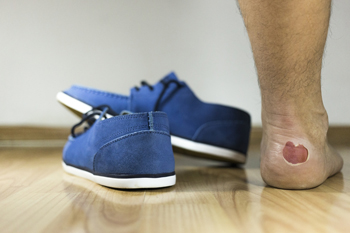 Patients who have suffered from blisters are familiar with the pain and discomfort they may cause. They may develop as a result of increased friction on a portion of the skin, which may come from wearing shoes or socks that fit improperly. When the skin becomes exposed, a blister will form as part of the body’s natural defense mechanism. This consists of a pocket of fluid which protects the affected area of skin. Additional reasons why blisters may develop may include allergic reactions to a bee sting or insect bite, or neuropathy which may originate from diabetes. If neuropathy is present, it may cause the patient to be unaware of existing blisters, and this may be a result of the inability to sense discomfort. When new skin begins to grow under the blister, it will generally drain on its own. If you have a blister on your foot that has become infected, it is suggested to speak to a podiatrist who can properly assist you in obtaining the correct treatment.
Patients who have suffered from blisters are familiar with the pain and discomfort they may cause. They may develop as a result of increased friction on a portion of the skin, which may come from wearing shoes or socks that fit improperly. When the skin becomes exposed, a blister will form as part of the body’s natural defense mechanism. This consists of a pocket of fluid which protects the affected area of skin. Additional reasons why blisters may develop may include allergic reactions to a bee sting or insect bite, or neuropathy which may originate from diabetes. If neuropathy is present, it may cause the patient to be unaware of existing blisters, and this may be a result of the inability to sense discomfort. When new skin begins to grow under the blister, it will generally drain on its own. If you have a blister on your foot that has become infected, it is suggested to speak to a podiatrist who can properly assist you in obtaining the correct treatment.
Blisters may appear as a single bubble or in a cluster. They can cause a lot of pain and may be filled with pus, blood, or watery serum. If your feet are hurting, contact Dr. David Ungar of Personal Foot Care. Our doctor can provide the care you need to keep you pain-free and on your feet.
Foot Blisters
Foot blisters are often the result of friction. This happens due to the constant rubbing from shoes, which can lead to pain.
What Are Foot Blisters?
A foot blister is a small fluid-filled pocket that forms on the upper-most layer of the skin. Blisters are filled with clear fluid and can lead to blood drainage or pus if the area becomes infected.
Symptoms
(Blister symptoms may vary depending on what is causing them)
Prevention & Treatment
In order to prevent blisters, you should be sure to wear comfortable shoes with socks that cushion your feet and absorb sweat. Breaking a blister open may increase your chances of developing an infection. However, if your blister breaks, you should wash the area with soap and water immediately and then apply a bandage to the affected area. If your blisters cause severe pain it is important that you call your podiatrist right away.
If you have any questions, please feel free to contact our office located in Farmington, MI . We offer the newest diagnostic and treatment technologies for all your foot care needs.
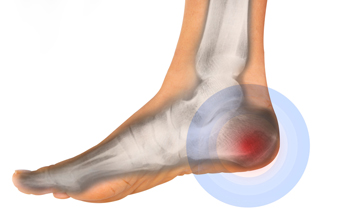 Many patients suffer from heel pain, and there may be several reasons why this may occur. These may include injuries to the foot that involves the heel, chronic conditions such as plantar fasciitis, bruises or stress fractures. Achilles tendonitis may develop as result of overuse, which may happen while participating in sporting activities. A heel pad bruise may occur as a result of wearing shoes that do not have adequate cushioning. It may also occur from falling from a high distance and landing on the heel. A condition that is known as haglund’s syndrome may occur if a bony protrusion develops on the back of the heel as it rubs against shoes that are stiff. Symptoms of this may include pain in the heel area of the foot, and possible swelling. If you are experiencing any type of heel pain, it is strongly suggested that you seek the counsel of a podiatrist who can properly diagnose and treat heel pain.
Many patients suffer from heel pain, and there may be several reasons why this may occur. These may include injuries to the foot that involves the heel, chronic conditions such as plantar fasciitis, bruises or stress fractures. Achilles tendonitis may develop as result of overuse, which may happen while participating in sporting activities. A heel pad bruise may occur as a result of wearing shoes that do not have adequate cushioning. It may also occur from falling from a high distance and landing on the heel. A condition that is known as haglund’s syndrome may occur if a bony protrusion develops on the back of the heel as it rubs against shoes that are stiff. Symptoms of this may include pain in the heel area of the foot, and possible swelling. If you are experiencing any type of heel pain, it is strongly suggested that you seek the counsel of a podiatrist who can properly diagnose and treat heel pain.
Many people suffer from bouts of heel pain. For more information, contact Dr. David Ungar of Personal Foot Care. Our doctor can provide the care you need to keep you pain-free and on your feet.
Causes of Heel Pain
Heel pain is often associated with plantar fasciitis. The plantar fascia is a band of tissues that extends along the bottom of the foot. A rip or tear in this ligament can cause inflammation of the tissue.
Achilles tendonitis is another cause of heel pain. Inflammation of the Achilles tendon will cause pain from fractures and muscle tearing. Lack of flexibility is also another symptom.
Heel spurs are another cause of pain. When the tissues of the plantar fascia undergo a great deal of stress, it can lead to ligament separation from the heel bone, causing heel spurs.
Why Might Heel Pain Occur?
Treatments
Heel pain should be treated as soon as possible for immediate results. Keeping your feet in a stress-free environment will help. If you suffer from Achilles tendonitis or plantar fasciitis, applying ice will reduce the swelling. Stretching before an exercise like running will help the muscles. Using all these tips will help make heel pain a condition of the past.
If you have any questions please contact our office located in Farmington, MI . We offer the newest diagnostic and treatment technologies for all your foot and ankle needs.
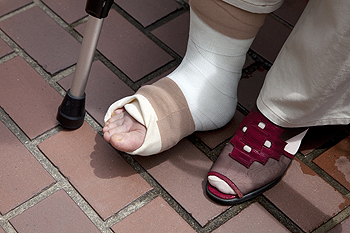 If you have fallen or dropped a heavy object on your foot, the result may be a broken foot. There are typically noticeable symptoms that are associated with this condition, and these may include severe pain and discomfort that is felt while attempting to walk, and possible swelling and bruising. If the fracture is severe, and appears to be dislocated, it may be a result of bones that are out of alignment. Patients who have medical conditions which may include diabetes or peripheral neuropathy, may not notice if their foot is fractured, and this may be a result of a loss of sensation. Once a proper diagnosis is performed, which typically consists of having an X-ray taken, the correct treatment can begin. This may include resting and elevating the foot as often as possible, and wearing a cast or protective boot while the healing process takes place. For more severe fractures, an MRI might be a necessary test to aid in determining the severity of the fracture. If you feel you have broken your foot, it is suggested that you consult with a podiatrist as quickly as possible so the proper treatment can begin.
If you have fallen or dropped a heavy object on your foot, the result may be a broken foot. There are typically noticeable symptoms that are associated with this condition, and these may include severe pain and discomfort that is felt while attempting to walk, and possible swelling and bruising. If the fracture is severe, and appears to be dislocated, it may be a result of bones that are out of alignment. Patients who have medical conditions which may include diabetes or peripheral neuropathy, may not notice if their foot is fractured, and this may be a result of a loss of sensation. Once a proper diagnosis is performed, which typically consists of having an X-ray taken, the correct treatment can begin. This may include resting and elevating the foot as often as possible, and wearing a cast or protective boot while the healing process takes place. For more severe fractures, an MRI might be a necessary test to aid in determining the severity of the fracture. If you feel you have broken your foot, it is suggested that you consult with a podiatrist as quickly as possible so the proper treatment can begin.
A broken foot requires immediate medical attention and treatment. If you need your feet checked, contact Dr. David Ungar from Personal Foot Care. Our doctor can provide the care you need to keep you pain-free and on your feet.
Broken Foot Causes, Symptoms, and Treatment
A broken foot is caused by one of the bones in the foot typically breaking when bended, crushed, or stretched beyond its natural capabilities. Usually the location of the fracture indicates how the break occurred, whether it was through an object, fall, or any other type of injury.
Common Symptoms of Broken Feet:
Those that suspect they have a broken foot shoot seek urgent medical attention where a medical professional could diagnose the severity.
Treatment for broken bones varies depending on the cause, severity and location. Some will require the use of splints, casts or crutches while others could even involve surgery to repair the broken bones. Personal care includes the use of ice and keeping the foot stabilized and elevated.
If you have any questions please feel free to contact our office located in Farmington, MI . We offer the newest diagnostic and treatment technologies for all your foot and ankle needs.
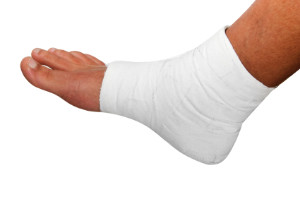 There are many people who enjoy the sport or hobby of running and jogging, and may experience trauma to the foot or ankle as a result of this. A common running injury may often include Achilles tendonitis, and this will affect the Achilles tendon which is located behind the heel. It typically becomes injured if the calf muscles are not properly stretched before engaging in a running activity, and the inflammation may produce pain and discomfort. Additionally, many people injure their ankles by suddenly stepping off a curb which may cause the ankle to roll inward. This may cause the tendons, ligaments, and muscles to tear, and the pain that accompanies this may cause instability in the ankle. If you have endured any ankle or foot injury, it is advised to seek the counsel of a podiatrist who can properly treat the condition.
There are many people who enjoy the sport or hobby of running and jogging, and may experience trauma to the foot or ankle as a result of this. A common running injury may often include Achilles tendonitis, and this will affect the Achilles tendon which is located behind the heel. It typically becomes injured if the calf muscles are not properly stretched before engaging in a running activity, and the inflammation may produce pain and discomfort. Additionally, many people injure their ankles by suddenly stepping off a curb which may cause the ankle to roll inward. This may cause the tendons, ligaments, and muscles to tear, and the pain that accompanies this may cause instability in the ankle. If you have endured any ankle or foot injury, it is advised to seek the counsel of a podiatrist who can properly treat the condition.
Foot and ankle trauma is common among athletes and the elderly. If you have concerns that you may have experienced trauma to the foot and ankle, consult with Dr. David Ungar from Personal Foot Care. Our doctor will assess your condition and provide you with quality foot and ankle treatment.
Foot and ankle trauma cover a range of injuries all over the foot; common injuries include:
Symptoms
Symptoms of foot and ankle injuries vary depending on the injury, but more common ones include:
Diagnosis
To properly diagnose the exact type of injury, podiatrists will conduct a number of different tests. Some of these include sensation and visual tests, X-rays, and MRIs. Medical and family histories will also be taken into account.
Treatment
Once the injury has been diagnosed, the podiatrist can than offer the best treatment options for you. In less severe cases, rest and keeping pressure off the foot may be all that’s necessary. Orthotics, such as a specially made shoes, or immobilization devices, like splints or casts, may be deemed necessary. Finally, if the injury is severe enough, surgery may be necessary.
If you have any questions, please feel free to contact our office located in Farmington, MI . We offer the newest diagnostic and treatment technologies for all your foot care needs.
The foot and ankle area works with 26 bones, 33 joints, and more than 100 different muscles, tendons, and ligaments. Problems with any parts of this network can result in some kind trauma within the foot and ankle area. Most foot and ankle trauma is a result of aging or intense activities such as sports. However, trauma in this area can also be the result of simple things such as wearing heels too much or even walking on an uneven pavement. There are several kinds of symptoms related to specific injuries, and there are also several different treatments that could be used as well.
Foot Injuries and Symptoms
Some common injuries in the feet include stress fractures and bunions. Stress fractures are small cracks in a bone or severely bruised parts of the bone. This type of injury is caused by intense and repetitive activity, which is found in actions involved with sports and exercise. Symptoms of this injury include pain, swelling, tenderness, and possible bruising. Another common injury with bones is also bunions, which are bony bumps typically formed on the big and little toes. This injury is typically a result from wearing high heels and unfit shoes. Some common symptoms are swelling around the big and little toe areas, as well as pain and restricted movement.
Ankle Injuries and Symptoms
The common injuries associated with ankle trauma consist of sprains, strains, and fractures. These injuries are defined by the type of tissue that has been damaged. Fractures are breaks within the bones caused by sudden impacts to the area. Sprains relate to any damage of the ligaments, commonly caused by being stretched beyond their normal range of motion. Strains are attributed to damage of the muscles and tendons from being pulled too far. Symptoms of these injuries include severe pain, limited range of motion, and swelling.
Diagnosis and Treatment
Since there are several types of injuries with a variety of symptoms, it is important to see a podiatrist about your condition. Podiatrists can run a variety of tests to diagnose an injury accurately. This includes physical examinations, X-rays, or MRIs. A podiatrist may even run a stress test, which is an X-ray taken while pressure is applied to the damaged area. Once your injury has been diagnosed, the doctor may have you wear a cast or a splint, or gradually develop your range of motion. Severe injuries may require physical therapy or even surgery if necessary. If you have any concerns from past foot and ankle trauma experiences, consult with Dr. David Ungar from Personal Foot Care. Our doctor can assess your condition and provide you with quality foot and ankle treatment.
If you have any questions, please feel free to contact our office located in Farmington, MI . We offer the newest diagnostic and treatment technologies for all your foot care needs.
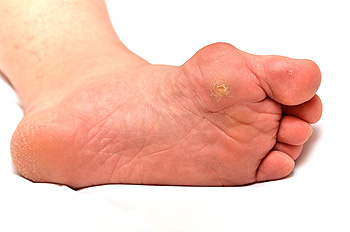 The medical term that is referred to as hallux valgus is commonly known as a bunion. This foot condition occurs when the big toe leans toward the toe next to it, and the result may be a bony protrusion that extends on the side of the big toe. There are additional symptoms that may be associated with this ailment, which may include swelling in the affected joint, the skin becoming callused and red, which may be a result of the two toes overlapping, or possibly changes in the foot structure. Many patients notice pain may derive from wearing shoes that no longer fit comfortably. There may be several causes of bunions, and these may include an inherited trait, wearing shoes that do not have adequate room for the toes to move freely in, or possibly a medical condition such as gout or rheumatoid arthritis. If you feel you have developed a bunion, it is strongly suggested that you seek the counsel of a podiatrist who can begin the correct treatment for you.
The medical term that is referred to as hallux valgus is commonly known as a bunion. This foot condition occurs when the big toe leans toward the toe next to it, and the result may be a bony protrusion that extends on the side of the big toe. There are additional symptoms that may be associated with this ailment, which may include swelling in the affected joint, the skin becoming callused and red, which may be a result of the two toes overlapping, or possibly changes in the foot structure. Many patients notice pain may derive from wearing shoes that no longer fit comfortably. There may be several causes of bunions, and these may include an inherited trait, wearing shoes that do not have adequate room for the toes to move freely in, or possibly a medical condition such as gout or rheumatoid arthritis. If you feel you have developed a bunion, it is strongly suggested that you seek the counsel of a podiatrist who can begin the correct treatment for you.
If you are suffering from bunion pain, contact Dr. David Ungar of Personal Foot Care. Our doctor can provide the care you need to keep you pain-free and on your feet.
What Is a Bunion?
Bunions are painful bony bumps that usually develop on the inside of the foot at the joint of the big toe. As the deformity increases over time, it may become painful to walk and wear shoes. Women are more likely to exacerbate existing bunions since they often wear tight, narrow shoes that shift their toes together. Bunion pain can be relieved by wearing wider shoes with enough room for the toes.
Causes
Symptoms
In order to diagnose your bunion, your podiatrist may ask about your medical history, symptoms, and general health. Your doctor might also order an x-ray to take a closer look at your feet. Nonsurgical treatment options include orthotics, padding, icing, changes in footwear, and medication. If nonsurgical treatments don’t alleviate your bunion pain, surgery may be necessary.
If you have any questions, please feel free to contact our office located in Farmington, MI . We offer the newest diagnostic and treatment technologies for all your foot care needs.
Connect With Us
